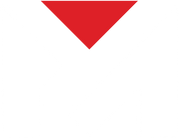You’ve been asking for us to scan a multitude of car parts and we’re here to deliver. Today Rob demonstrates how to 3D scan a downpipe for a Ferrari SF90 Stradale. So why might you want a 3D scan of a downpipe or any other exhaust system component? In this case, our friends at Boden Autohaus are creating a custom exhaust for a customer’s SF90 and instead of guessing and trying to create a 3D file from scratch, a 3D scan provides an accurate starting point to create custom flanges, mounting components and more. We have more videos coming soon for other car parts and even whole cars. Subscribe and turn on notifications so you know when those come out.
Have a part you want scanned? Leave it in the comments section down below and we might scan it in a future video!
EINSCAN HX AVAILABLE NOW at visionminer.com/einscan
The Einscan HX combines blue led and lasers, enabling a wider array of scannable objects, most notably the scanner has little to no issues when scanning dark or highly reflective objects which are notoriously difficult for pattern based 3D scanners like the Pro HD. The HX is highly accurate as well boasting a minimum point distance 0.05 mm and accuracy up to 0.04 mm under Laser Scan. Scanning is quick and efficient with up to 1,200,000 points/s, and multiple blue laser lines under Laser Scan Mode making scanning of most objects take only minutes for reverse engineering, CAD/CAM, 3D printing, etc. The design is compact and ergonomic, making it easily transportable with the included hard shell protection case. On top of all this the HX comes with a built-in color camera which means it supports full color texture capturing and tracking by texture.
Metrology and reverse engineering are made easy with 3D scanners with use cases across the board. These scanners are highly accurate and easy to use, making them perfect for anyone wanting to verify dimensional accuracy in certain cases or to easily reverse engineer and recreate objects when a 3D model simply isn't available. For example, in a past news episode we covered Chris Forsberg using 3D scanner based reverse engineering to create a custom widebody kit for his Formula Drift Nissan “Altimaniac”.
Check out our other 3D scanning videos where we've scanned vintage skateboards, tried out the iPhone 12 Pro Max's LiDAR scanning features and the unboxing of its siblings the Einscan Pro HD and Pro 2X Plus.
What is 3D Scanning?
3D Scanning - is the process of analyzing a real-world object or environment to collect data on its shape and sometimes its appearance, like the color and texture of the object. The collected data can then be used to construct digital 3D models.
Professional non contact 3D scanners however can use a variety of different technologies, each with their own pros and cons.
ToF or Time of Flight -- this uses a laser light to probe the subject of the scan. A laser rangefinder gets the distance of a surface by timing the round-trip speed of a pulse of light. This is usually great for large scale objects, entire rooms, or even entire buildings. Unfortunately, like the iphone, they’re not super accurate with details, and the resolution of the scans don’t get close to the next types of scanners.
Hand Held Lasers - these use triangulation with an actual laser and multiple sensors, and of the lineup that we have here, this is the EinScan HX -- you can get details down to 0.05mm or 50 microns. Another benefit is that it works with dark and reflective objects, unlike the next technology.
Structured and Modulated light. Most 3D Scanners use this technology -- it projects structures of light (think QR code patterns) as well as modulating bars of light that change back and forth. It then reads this data and calculates the shape and size of the part using algorithms.
Lastly, we have Photogrammetry - this basically takes many photographs from different angles, calculates all the differences, and chunks out a solid 3D model -- however, a big disadvantage of this is that it’s not measuring while it’s scanning, unlike all the other methods -- but it can work great, especially on a budget, and depending on your photographs and style of photography, it can also be very accurate.



Leave a comment